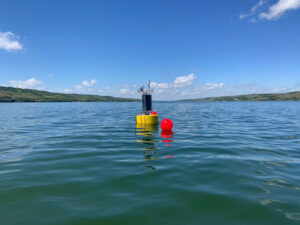Thermo Orion ionplus Sure-Flow Cyanide Electrode
The Thermo Orion ionplus sure-flow cyanide solid state combination electrode measures cyanide ions in aqueous solutions quickly, simply, accurately, and economically.
Features
- Sensing and reference half-cells built into one electrode
- Sure-Flow reference junction prevents electrode clogging
- Provides fast and stable readings
- Free ground shipping
- Expedited repair and warranty service
- Lifetime technical support
- More
Overview
The Thermo Orion ionplus sure-flow cyanide combination electrode has the sensing and reference half-cells built into one electrode, which decreases the amount of required solutions and reduces waste.
Data Collection
The built-in Sure-Flow reference junction prevents electrode clogging and provides fast and stable readings. The cyanide combination electrode is available with a waterproof BNC connector and 1m cable
Benefits
The Thermo Orion ionplus Cyanide Electrode offers additional benefits from the Sure-Flow Combination reference design. With this electrode, a separate reference electrode is unnecessary, making it convenient to use with small sample volumes. The free-flowing Sure-Flow junction assures stable, drift-free potentials. When measuring dirty samples which would clog conventional electrode junctions, the Sure-Flow junction can be opened and flushed clean simply by pressing the cap.
- Construction: ionplus Sure-Flow solid state combination
- Measurement Range: 10(-2) to 8 x 10(-6) M / 260 to 0.2 ppm
- Temp Range: 0 to 80 C
- Required Reference Electrode: Included
- Reference Filling Solution: 900062
- Calibration Standards: Consult user guide
- Required ISA: 951011
In The News
Rounded pebbles give evidence of past flowing water on Mars
NASA's Curiosity rover has found pebbles that appear to have been rounded by streamflow, according to a release from University of California Davis. Experts say the finding represents the first on-site evidence of sustained flowing water on Mars. The rounded pebbles discovered are only known to form when transported through water over long distances. Their discovery supports theories that the red planet could once have supported life. The smooth rocks were found between the north rim of the planet’s Gale Crater and the base of Mount Sharp, a mountain inside the crater. Researchers say they chose Gale Crater for study because there was a sediment deposit there that typically requires water to form.
Read MoreU. Delaware studying tidal flow, sediment movement in salt marshes
University of Delaware scientists are studying the impacts that rising sea levels might have on marsh ecosystems in the future, the University of Delaware has reported. Scientists predict that rising sea levels could convert marshes into intertidal flats. These conversions could drastically change land composition by stripping sediment from the land, which could alter water quality by exposing substantial quantities of sequestered carbon and pollutants. Researchers are monitoring the fluctuations of water flow and sediment concentrations in Delaware’s Brockonbridge Marsh.
Read MoreCombating Water Insecurity in Saskatchewan with Real-Time Data
The prairies of Saskatchewan can be described as one of the least water-secure parts of Canada, making water quality monitoring essential for informed resource management in a region already facing water insecurity. While natural physical properties worsen some of the poor water quality conditions in the region, others are connected to land use. Having grown up spending summers on the shores of Lake Huron, Helen Baulch, an associate professor at the School of Environment and Sustainability at the University of Saskatchewan , has always been dedicated to the protection of water resources. Looking back fondly at her childhood playing along the shore, Baulch also recalls the invasion of quagga mussels during her teenage years and watching the lake change as a result.
Read More










